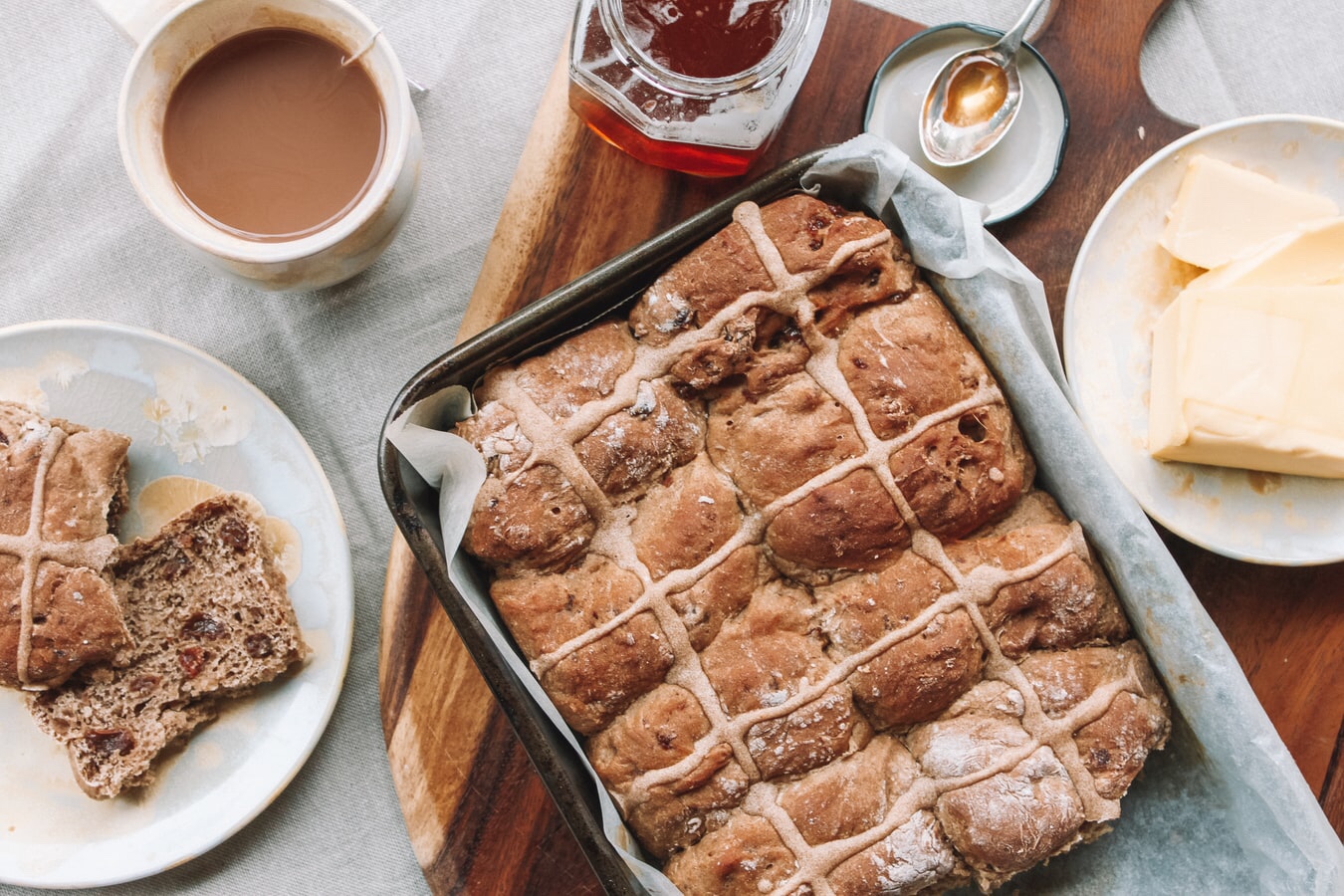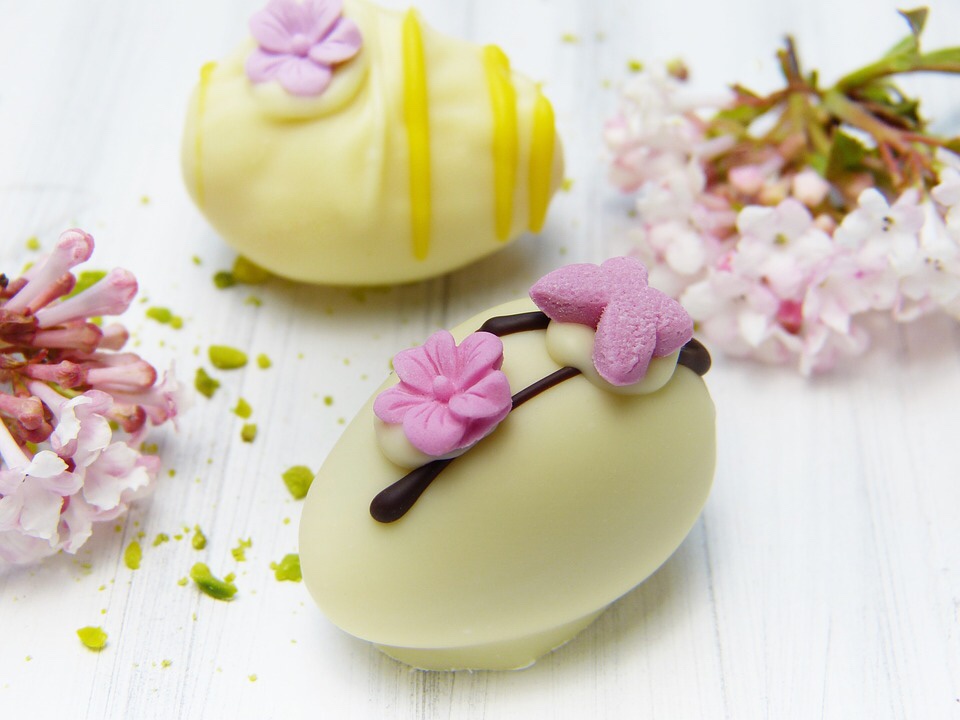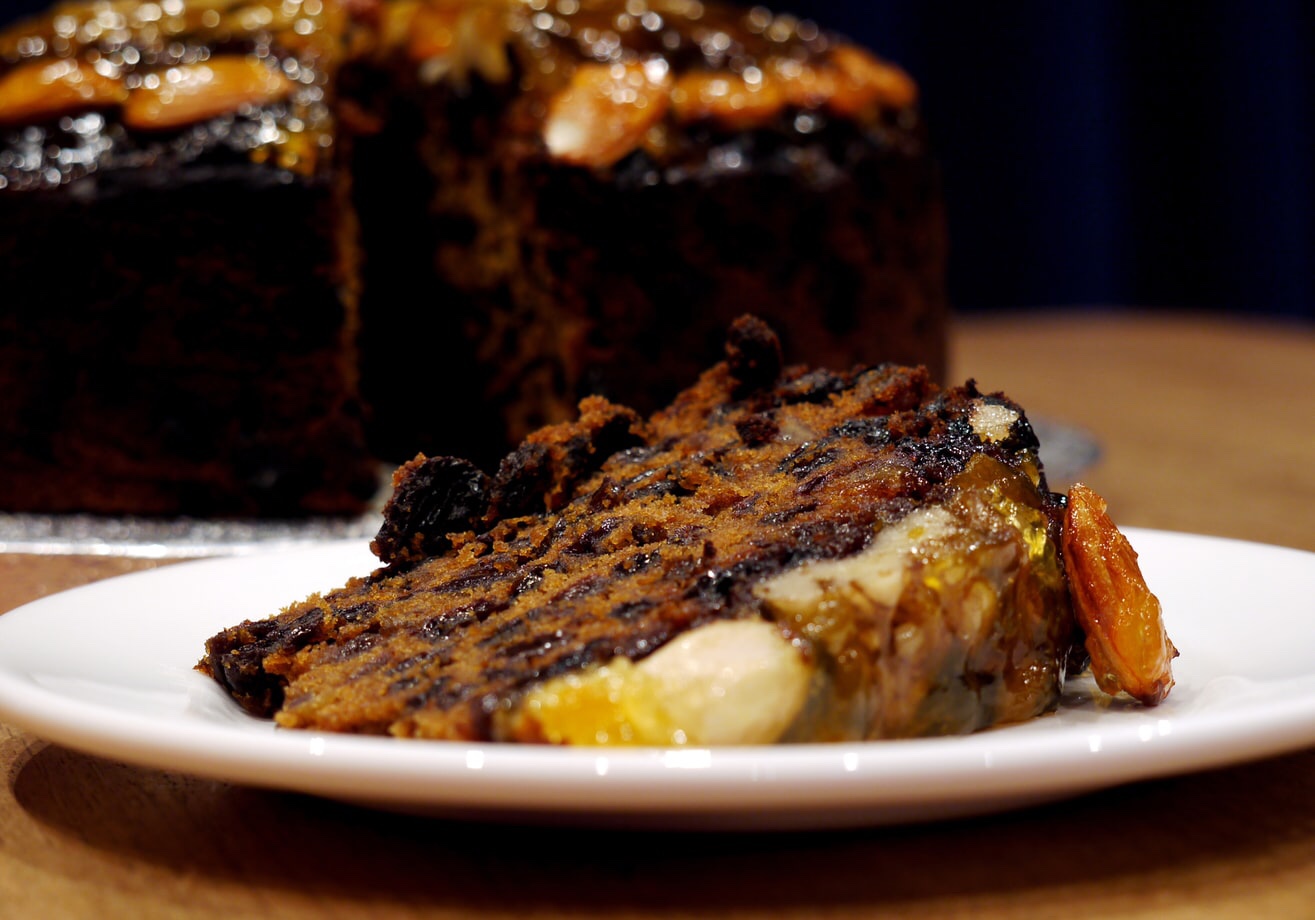Easter is a special time in the Christian calendar – one usually spent with family and friends, celebrating the arrival of spring. It is a particularly important date for Christians as it marks the date Jesus was resurrected, which is why most of the tasty treats we tuck into are symbolic of this important date.
Here, we look at traditional Easter foods, what they represent and why you should have them during your celebrations.

Hot Cross Buns
These soft, sweet buns are usually spiced and packed full of tasty raisins and candied fruit. They are typically served toasted with butter and have become one of the most popular Easter treats – so much so that many supermarkets are selling them for months beforehand. Traditionally eaten on Good Friday, they are said to date back as far as the 12th century, when an Anglican monk baked them and marked them with a cross in honour of Easter.

Eggs
Eggs have long been a staple Easter food – but why? It’s because they are said to symbolise fertility and the coming of spring. In Christianity specifically, the shell represents Christ’s tomb and the inside of the egg represents new life. There are lots of great egg recipes you can use for an Easter feast – from devilled eggs to frittatas.
So, what about chocolate Easter eggs? They have become one of the most popular treats at this time of year, with hundreds of delicious options to choose from. The Victorian’s were first to adapt the egg tradition, crafting hollow cardboard eggs with gifts inside – and the first chocolate eggs are said to have been crafted in the 1800s.

Lamb
Lamb is another food traditionally eaten at Easter time – usually roasted and served with potatoes and seasonal veg. It is a great meat to serve guests for Easter Sunday lunch, and there are plenty of cuts to choose from, including a joint, racks or chops. But why is lamb significant at Easter? It’s partly due to Jesus’ title as the Lamb of God and seen as a symbol of his self-sacrifice.

Simnel Cake
Simnel cake is a tasty fruit cake similar to Christmas cake, typically made using almonds, sultanas, currants and mixed peel. It makes a great showstopper for your Easter dinner table as it is decorated on top with almond paste and 11 tasty marzipan balls – representative of the apostles. Traditionally, simnel cakes were baked to celebrate the end of lent.
Now that you know the traditional foods served at Easter – you can start to plan your feast!







